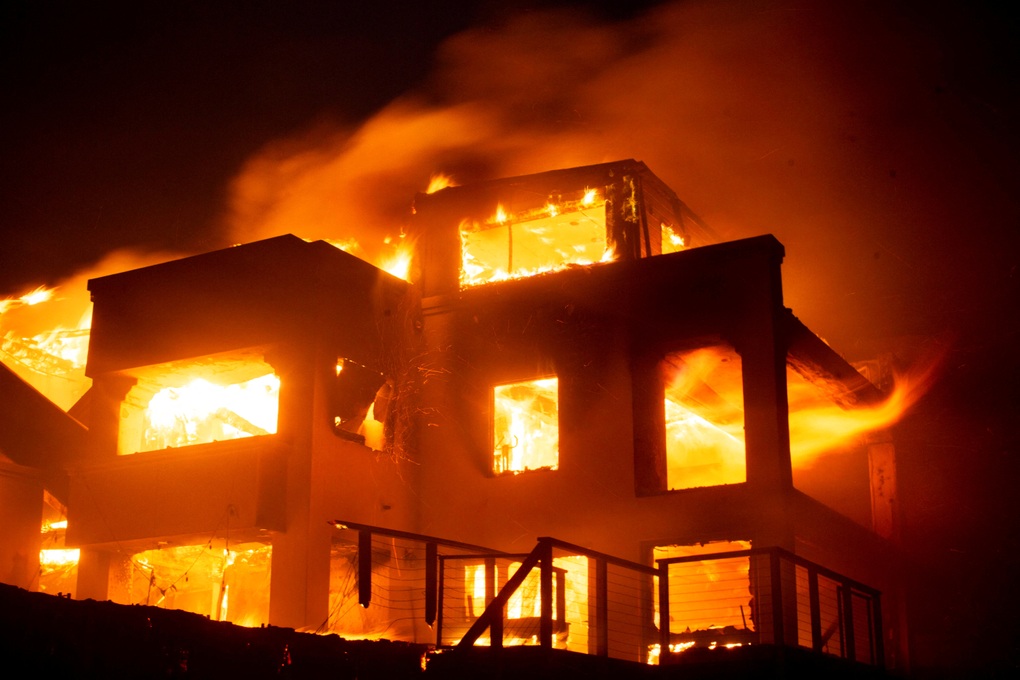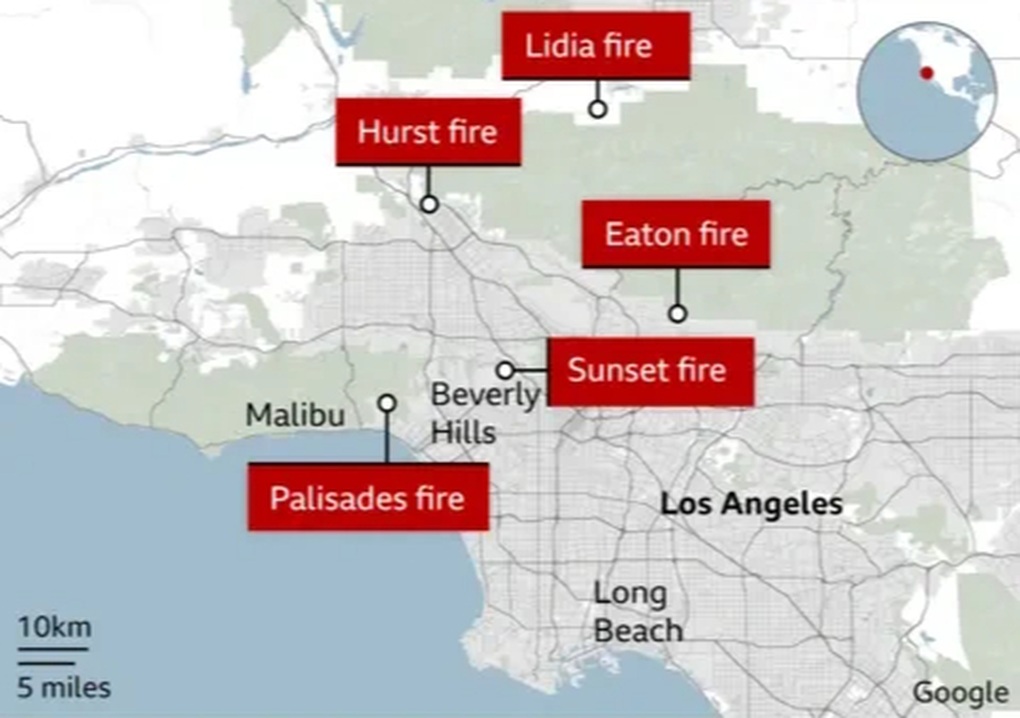Witness: Los Angeles wildfires as devastating as war
A house engulfed in flames on January 8 in Los Angeles, California (Photo: Reuters).
Wildfires continued to rage in Los Angeles on January 8, killing at least five people and destroying hundreds of homes. More than 100,000 people were ordered to evacuate.
In Los Angeles, California, five separate wildfires are burning, all of which are not even 1 percent contained, according to state officials. Two of the larger fires have formed a pincer movement that encircles the city.
Strong winds have hampered firefighting efforts and fueled the fires, which have been raging since January 7.
To the west, the Palisades Fire burned 15,000 acres and destroyed 1,000 structures in the hills between Santa Monica and Malibu. The fire raced down Topanga Canyon until it reached the natural boundary of the Pacific Ocean on January 7. It was one of the most destructive wildfires in Los Angeles history.
To the east, in the San Gabriel foothills, the Eaton Fire has burned another 11,000 acres and claimed at least five lives, Los Angeles County Sheriff Robert Luna said. AccuWeather estimated initial damage and economic losses at more than $50 billion.
“We are facing a historic natural disaster. I don’t think words can adequately describe the magnitude of this,” Kevin McGowan, head of the Los Angeles County Department of Emergency Management, said at a news conference.
Skies over parts of Los Angeles were ablaze and blanketed in thick smoke. Nearly 1 million homes and businesses in Los Angeles County were without power, according to PowerOutage.
“The wind was blowing hard, the fire was 9-12 meters high, with a ‘bang, bang, bang’ sound. It sounded like a war zone,” Kevin Williams, an evacuee due to the Eaton wildfire, shared at the evacuation center in Pasadena.
Wildfires broke out in five areas of Los Angeles (Graphic: BBC).
One of five people killed in the devastating Los Angeles fires died trying to protect her home from the flames, the victim’s sister said on January 8, sharing the heartbreaking moment she was forced to leave her younger brother behind.
Victim Victor Shaw is said to have ignored firefighters’ orders to evacuate as the fire began to rage in the Altadena area.
“I had to go outside because the embers were so big, flying everywhere like a firestorm. When I looked back, I saw the house was starting to be engulfed in flames, and I had to leave,” said Shari Shaw.
Al Tanner, a friend of Victor Shaw, later found his body in the driveway of the burned-out home. “It appears he was trying to save the house that his parents had owned for almost 55 years,” Mr Tanner said.
Fire crews were faced with a firestorm of strong winds, low humidity, and most worryingly, inadequate water supplies to control the blaze.
Los Angeles officials say the city’s water systems are still functioning properly, but they were designed for urban environments , not wildfires.
“It is not sustainable to fight a fire with multiple fire hoses drawing water from the system for hours at a time,” said Mark Pestrella, director of the Los Angeles County Department of Public Works.
Water shortages have hampered firefighting efforts, especially in Pacific Palisades, an upscale coastal community where a wildfire has burned nearly 15,000 acres.
Climate scientists say the Los Angeles area is prone to fires as the fall monsoon season approaches, after back-to-back wet winters create large amounts of grass and vegetation that turn into fuel for fires during the hot summers.
Before the wildfires broke out, the National Weather Service issued its highest warning of extreme fire danger across Los Angeles County from January 7-9. Low humidity and dry vegetation due to lack of rain are bad conditions for wildfires.







